
Policy
Management
Framework
Executive Management Team
6 October 2022
Version 1. 1
setu.ie
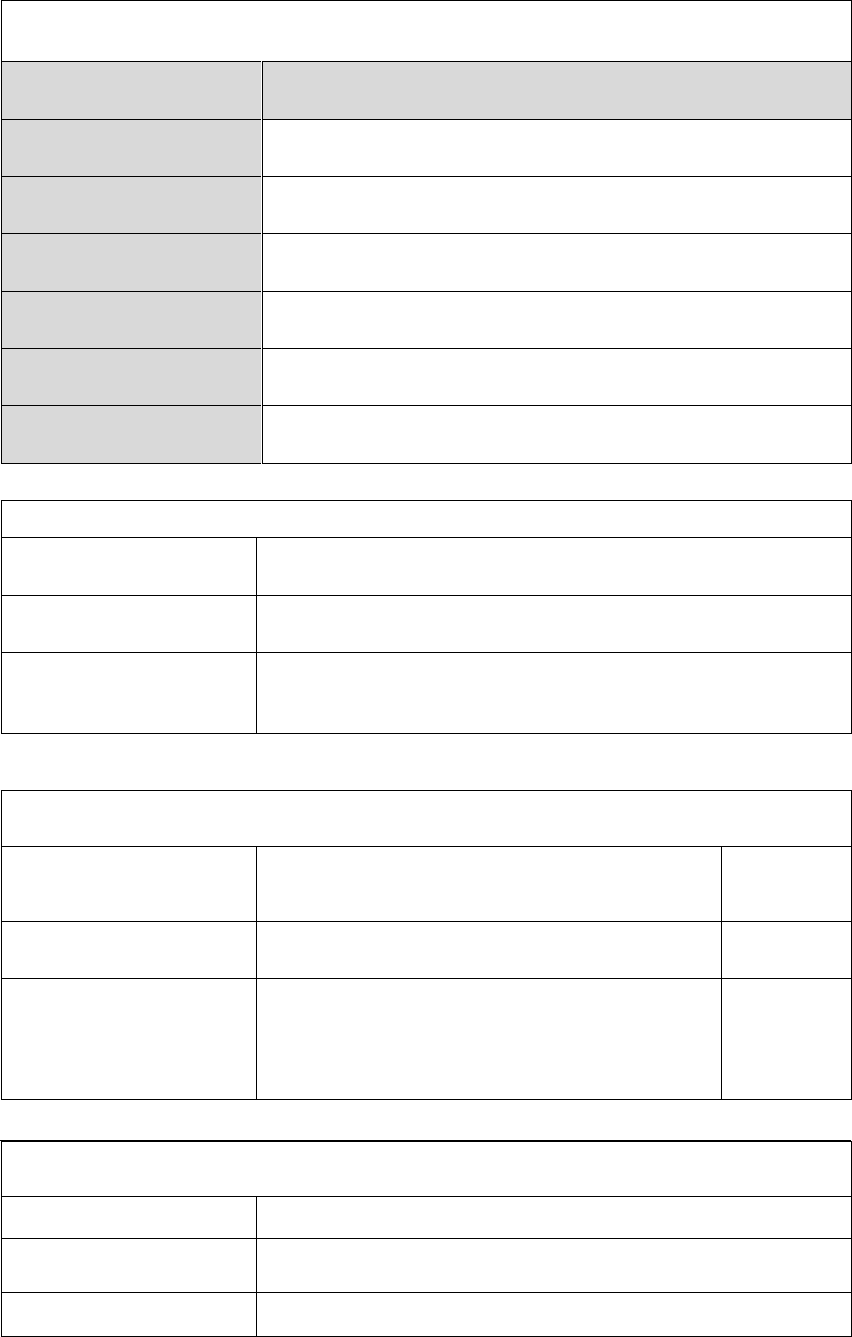
Policy Management Framework Version 1.1 Page | 1
Document Details
Document Title:
Policy Management Framework
Version:
1.1
Approved By:
Executive Management Team
Date Approved:
6 October 2022
Effective Date:
7 November 2022
Next Review Date:
January 2025
Framework Owner:
University Secretary/VP Governance
Consultation Details
Name:
Corporate Affairs Co-ordinators
Date:
Mid-August to mid-September 2022
Details of Consultation:
Consultation with stakeholders in Academic Affairs,
Human Resources, Equality Diversity & Inclusion, and
Research, Innovation & Graduate Studies.
Revision History
Previous Version No.
Summary of Amendments
Reviewed
Version No.
N/A
Approved by EMT 6 October 2022
1.0
1.0
Minor changes to give clarity to 6.2.1 re
academic policies and change review date
to three years 6.4.4
1.1
Publication Details
Where
Date
Drive/Public/HR/Policies
All Staff Email

Policy Management Framework Version 1.1 Page | 2
Feedback or issues arising on implementation of this framework should
be communicated to the framework author.
Framework Authors
Risk & Compliance Co-ordinators
Policy Management Framework Version 1.1 Page | 3
Contents
Document Details ............................................................................................................................... 1
Contents ............................................................................................................................................... 3
1. Introduction .................................................................................................................................. 4
2. Purpose ......................................................................................................................................... 5
3. Scope ............................................................................................................................................. 5
4. Principles ...................................................................................................................................... 5
5. Definitions ..................................................................................................................................... 6
6. Guidelines for policy development, approval and review. ............................................... 7
6.1 Initiation and development .............................................................................................. 7
6.2 Approval Pathways ............................................................................................................ 8
6.2.1 Academic Policies ...................................................................................................... 8
6.2.2 Non-academic Policies ............................................................................................. 9
6.2.3 All Policies .................................................................................................................... 9
6.3 Communication ........................................................................................................................ 9
6.4 Implementation and Review ............................................................................................... 10
7. Training ....................................................................................................................................... 11
8. Related Documents .................................................................................................................. 11
9. Useful Links ................................................................................................................................ 11
10. Date of next review: January 2025 ...................................................................................... 12
11. Appendices ................................................................................................................................ 12
Appendix 1 Description of Policy Contents ........................................................................... 13
Appendix 2 Policy Checklist ...................................................................................................... 15
Appendix 3 Guidelines for writing good policies .................................................................. 17
Appendix 4 Equality Impact Assessment Form .................................................................... 20
Appendix 5 Policy Review Record Sheet ............................................................................... 22
Appendix 6 Version Control ....................................................................................................... 24
Appendix 7 Communications Checklist .................................................................................. 27
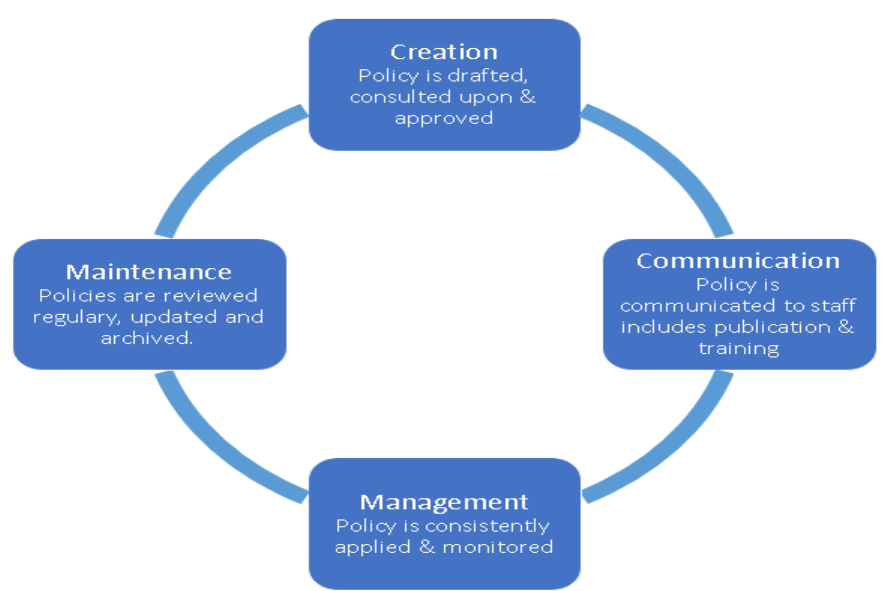
Policy Management Framework Version 1.1 Page | 4
1. Introduction
The South East Technological University (SETU) Policy Management
Framework is a set of guidelines on the development, implementation,
monitoring and review of policies.
A policy can be defined as ‘a set of principles, rules, and guidelines developed
and adopted by an organisation, and published in a format that is widely
accessible’. SETU policies represent the official position of the University on
any aspect of the Universities activities. They are a statement of intent that
guide decisions, and are, therefore, a critical element of the governance of the
University, enabling it to communicate and achieve its objectives and to be
compliant with relevant legislation and with good practice.
Policy management is the process of developing, approving, communicating,
implementing and maintaining policies. Effective policy management facilitates
good governance and supports SETU by, amongst other things, demonstrating
that policies align and comply with national, European and international legal
and regulatory requirements.
Table 1 - Policy Management Process
A framework for policy management establishes a structure for and outlines
the standards and principles of policy development, approval, communication,
implementation and maintenance (including review). It helps to ensure a
Policy Management Framework Version 1.1 Page | 5
transparent and consistent process for stakeholder input and outlines an
appropriate approval pathway.
2. Purpose
The purpose of this framework is to establish and outline a process for the
management of policies in the University.
3. Scope
This framework applies to the development, approval, implementation and
review of all policies (academic and non-academic) including policies that
support corporate functions, the student experience, and national and
transnational partnerships.
4. Principles
The guiding principles for the management of SETU policies are that they:
4.1 Be informed by national and international best practice.
4.2 Comply with national legislation and EU legislation as appropriate.
4.3 Are drafted in consultation with relevant stakeholders who have an
opportunity to contribute to the process.
4.4 Be developed in conjunction and align with existing policies and
regulations.
4.5 Be developed in line with this framework to ensure high quality
documents that reflect the University’s commitment to excellence.
4.6 Be developed according to a standard procedure to ensure consistency.
4.7 Comply with SETU Branding Guidelines.
4.8 Be in keeping with the University’s commitments to Equality, Diversity
and Inclusion (EDI), ensure that policies are non-discriminatory, use
gender inclusive language, and are fair and inclusive in meeting the
legitimate needs of the diverse groups that make up the University
community.
4.9 Be assigned an Owner who has overall responsibility for the
implementation of the policy or procedure and an Author who is
responsible for drafting the policy and co-ordinating any feedback.
4.10 Be easily accessible and published, in the first instance, on the
Governing Body Statements & Policies web page and subsequently on
the relevant section of the SETU website which broadly are on the
Academic Affairs pages for academic policies and procedures, on the
Governance page on the SETU website for non-academic policies, the

Policy Management Framework Version 1.1 Page | 6
Research page for research policies, the HR page for HR policies and the
Computer Services page for Computer Services policies.
4.11 Are communicated in a timely and effective manner.
4.12 Undergo regular monitoring and review to ensure that they remain fit-for
purpose
5. Definitions
Policies exist within a hierarchy of broader regulatory instruments, including
legislation and regulatory requirements. These requirements take precedence
over policies.
The following definitions apply:
5.1 Legislation is the set of laws and rules made by the Oireachtas. Policies
must comply with all relevant national and international legislation.
5.2 Regulation is specific, details how legislation is enforced and refers
broadly to the system of statutory and administrative rules and
requirements placed on Universities.
5.3 Policies represent the official position of the University on any aspect of
its activities. Policies are clear, simple statements of how an organisation
intends to conduct its activities that can be used to guide decisions.
They are formally approved by the Governing Body and have broad
application across the University. Once approved, compliance with a
policy is mandatory.
5.4 Procedures provide detailed mandatory direction on how a policy should
be implemented and may be approved by relevant Committees. They
establish the ‘who, what, where and when’ in relation to a policy, and
establish accountability. They outline what records must be kept (if
relevant).
5.5 Processes outline the specific steps or actions that must be taken to
implement a procedure, e.g., system steps.
5.6 Guidelines provide approved and recommended approaches to
implementing a policy but are not mandatory.
5.7 A Policy Owner is the appropriate Executive Management Team (EMT)
member whose remit or responsibility covers the subject area of the
policy.
5.8 A Policy Implementer is the appropriate Head of local unit/area
responsible for implementation, e.g. Head of Department, functional area
manager e.g. HR Manager, Director of Research Institute.
5.9 A Policy Author is the officer who writes the policy.
Policy Management Framework Version 1.1 Page | 7
6. Guidelines for policy development, approval and
review.
6.1 Initiation and development
6.1.1 New policies are developed in response to
❖ strategic planning initiatives,
❖ changes to legislation or codes of governance,
❖ institutional restructuring
❖ an identified risk or gap following internal or external feedback
from stakeholders (students, employees, internal audit, health &
safety, risk owners, external audit, external reviewers, external
examiners, etc.).
The relevant Executive Management Team member is responsible for
initiating the process where a policy and Policy Owner do not currently
exist on the relevant issue.
6.1.2 The relevant line manager should be consulted regarding the need to
develop a policy.
6.1.3 The proposed policy should be drafted in accordance with the approved
Policy Template (Appendix 1). The intended purpose of the policy or
procedure and the rationale for its development should be clearly
outlined by the proposer. Bear in mind that a policy should be a
statement of principles. Detailed procedures are generally not
appropriate for policies.
6.1.4 The proposed policy should be informed by research on existing policies
in SETU, in other institutions, and by international best practice.
6.1.5 Any impact on existing policies should be captured, related documents
referenced in the policy and a plan put forward for any necessary
updates.
6.1.6 The documents ‘Checklists for Creating Policies’ (Appendix 2), and
‘Guidelines for Writing Good Policies’ (Appendix 3) should be employed
and consulted during the drafting phase to ensure that the quality of the
document is at the appropriate level as it represents the official position of
the University.
6.1.7 An Equality Impact Assessment (EIA) should be completed when first
drafting a new policy. An EIA (Appendix 4) is a systematic and evidence-
based process which verifies that the University’s policies and practices
are non-discriminatory, are fair and inclusive in meeting the legitimate
needs of the diverse groups that make up the University community. An
assessment will identify where a policy is promoting Equality, Diversity
Policy Management Framework Version 1.1 Page | 8
and Inclusion in the University and can also identify where a policy could
be potentially discriminatory.
6.1.8 Relevant stakeholder groups should be consulted on the proposed policy
before it is circulated for consideration to the relevant committee via the
appropriate approval pathway. Those who should be consulted include
those responsible for the operationalisation of the policy and for any
system changes that are required to implement or report on elements of
the policy e.g. Academic Registry, Computer Services, Human Resources,
Equality, Diversity & Inclusion Office, Research Office etc.
6.1.9 Relevant committees should review and approve the proposed policy
before it is shared with other relevant stakeholder groups such as
employees representatives for consultation purposes. The advice of the
HR Manager should be sought in good time to allow for union/employees
consultation where the policy impacts on the terms and conditions of
employees.
6.1.10 Revised policies that are submitted for committee approval should
include a tracked change version of the policy indicating where the
currently approved policy has been amended in addition to a ‘clean’
version of the revised policy, for ease of consideration by committee
members. Where significant revisions have been made to a policy it
should be accompanied by a Memo outlining the purpose of the revisions.
The Policy Review Record Sheet in Appendix 5 is intended to provide
guidance for the review of a policy. If the revised policy needs to go
forward for committee approval, the record sheet may be appended to
the revised policy for information purposes. For version control guidance
see Appendix 6.
6.2 Approval Pathways
Approval of policies follows the agreed Approval Pathway as set out below.
6.2.1 Academic Policies
The Academic Council is the statutory body for academic policy to promote, and
to ensure, excellence in all aspects of the academic work of SETU. Council
committees are the main forums through which the work of council is conducted
and is ordinarily, the first destination for detailed consideration, analysis and
drafting of policies, procedures and other matters and the structures through
which policy implementation is overseen. Therefore, policy development must
be referred to Council for debating and approval and reports from committees
on policy implementation and compliance (e.g. validation approvals, external
examiner approvals etc.) will be referred to Academic Council for consideration,
noting and process scrutiny (if necessary) in Council.
Policy Management Framework Version 1.1 Page | 9
Academic Council has established committees to oversee each of the individual
academic policy areas, including Academic Quality, Academic Planning, Learning
and Teaching and Research, Innovation & Graduate Studies.
Academic policies should go to Executive Management Team for approval
before going to Academic Council for their approval. Policies approved by
Academic Council proceed to Governing Body for final approval.
6.2.2 Non-academic Policies
Proposed non-academic policies may be circulated by the relevant Policy
Owner or Unit to the relevant committees, before being considered by the
Executive Management Team, the relevant Principal/Sub Committee of
Governing Body and finally by Governing Body itself.
Executive Management Team, and relevant committees, should review and
approve the proposed policy before it is shared with other relevant stakeholder
groups such as employee’s representatives.
A short slide deck/power point presentation addressing the key points should
be included along with the policy when it is circulated to Executive
Management Team, the relevant principal Committee of Governing Body and
finally to Governing Body.
6.2.3 All Policies
A policy is effective from the date of Governing Body approval, as appropriate.
The recording secretary to the Governing Body will provide a status update to
the Policy Owner. Where the policy has been approved by Governing Body the
Policy Owner should within 5 working days edit the policy to reflect the
approval date, officially launch the policy and ensure it is available on the SETU
website.
Principal/Sub Committees play an important role in policy consideration. Policy
matters which have already been considered by Principal Committees and
Academic Committees may be further considered by Governing Body.
6.3 Communication
6.3.1 A stakeholder analysis should be conducted to identify who internally and
externally is impacted by the policy.
6.3.2 As above once approved, a policy or procedure is communicated to the
relevant stakeholders and published on the relevant section of the
University website.
6.3.3 A communication checklist (Appendix 7) is developed outlining the
stakeholder groups that should be notified of the new policy or
procedure, and this can inform a communication plan.
6.3.4 The communication plan should also facilitate provision of feedback by
stakeholders to the relevant Owner on the policy.
Policy Management Framework Version 1.1 Page | 10
6.3.5 In addition to the communication plan, a list of all new and revised
policies is communicated to employees by email from the responsible
Vice President to the University every year. Under employees’ contracts,
all employees are bound by approved policies.
6.4 Implementation and Review
6.4.1 The implementation of the policy should be monitored by the Policy
Owner as denoted on the policy template. The Policy Author is
responsible for receiving feedback on issues identified in the initial
implementation phase which may prompt a review of the policy. If there
are any issues with implementing the policy an email should be sent
outlining the issues to the Policy Author. The Policy Author will be
responsible for collating this feedback and sharing with the Policy Owner
who will determine whether a review of the policy is required.
6.4.2 Many policies will need to be implemented at a local level and the Policy
Owner, e.g. Executive Management Team member, is responsible for
communicating the policy to the relevant local units for local
implementation.
6.4.3 Head of local unit/area responsible for local implementation, e.g. Head of
Department, functional area manager e.g. HR Manager, Director of
Research Institute will be responsible for informing the Policy Owner
about any significant issues or problems with the implementation of the
policy (e.g. appeals or disputes) that may arise.
6.4.4 The policy template includes a review date. The Policy Owner is
responsible for scheduling a review of the policy no later than three
years after the date of initial approval by Governing Body and/or as soon
as possible following new or updated legislation, national or sectoral
policy. Thereafter, subject to the approval of Governing Body, it should
be reviewed every three to five years, or sooner if there is a requirement
to align with new legislation, structures or changes in related policies or
good practice.
6.4.5 The office of each responsible Vice President (Academic Affairs,
Corporate Affairs, Research, Innovation & Graduate Studies and others
as appropriate) will conduct a periodic review of all policies in their area
for the purposes of prompting the need to initiate a new policy or a
policy review.
6.4.6 The review process should incorporate feedback from relevant
stakeholder groups/users of the policy or procedure to make sure that it
remains fit-for purpose.
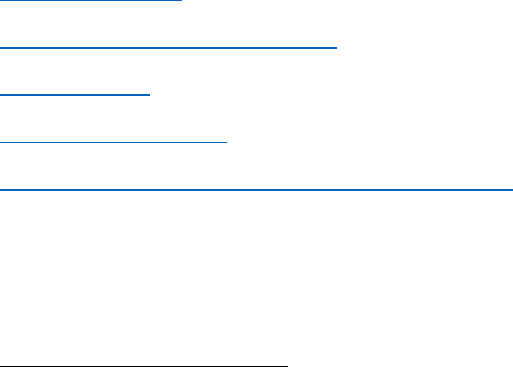
Policy Management Framework Version 1.1 Page | 11
6.4.7 A Policy Review Record Sheet (Appendix 5) should be completed to
record any changes (minor or major) made to a policy to ensure that the
document history is captured.
6.4.8 Any changes that impact on the intended purpose or substance of the
policy (minor or major) require the policy to be resubmitted to the
relevant committee(s) for noting and approval. Major changes may
require the policy to be considered as an Agenda item by committees; in
this case it should be accompanied by a memorandum outlining the
rationale for the changes.
6.4.9 Care should be taken that the footer on the revised policy is revised to
reflect the amendment. If major or substantive changes it is Version 2.0
1
.
The Date of Issue is the date of publication on which the revised policy is
uploaded on the relevant website and the link to that website should be
used in communications to stakeholders to inform them that the revised
policy is now effective.
6.4.10 An updated Equality Impact Assessment should be incorporated into the
review process, to be aware of any changes, requirements or updates
needed to respond to Equality, Diversity and Inclusion within the
University community and relevant developments in the intervening
period. See Appendix 4.
7. Training
Training on this policy will be provided by the Corporate Affairs Team.
8. Related Documents
Document Management Framework, includes templates for terms of reference,
minutes and reports (to follow).
9. Useful Links
Governing Body
Executive Management Team
Policies page
Branding Guidelines
Technological Universities Act 2018 (revised)
1
See Appendix 6 Version control guidance for further information
Policy Management Framework Version 1.1 Page | 12
10. Date of next review: January 2025
11. Appendices
Appendix 1 Description of Policy Contents
Appendix 2 Policy Checklist
Appendix 3 Guidelines for writing good policies
Appendix 4 Equality Impact Assessment form
Appendix 5 Policy Review record sheet
Appendix 6 Version Control guidance
Appendix 7 Communications Checklist

Policy Management Framework Version 1.1 Page | 13
Appendix 1 Description of Policy Contents
SETU Policies should be presented as follows:
Cover Sheet
SETU Policies have the branded SETU Policy cover sheet.
Page 1 Include the following tables:
Policy Details Table
Revision History Table
Consultation Details Table
Publication Details
Feedback Table (Policy Author)
Confirmation of Review table
Page 2 Table of Contents
Download the policy template which is included in the selection of SETU Brand
templates which can be found here.
Standard font is inter 12. Further Brand Guidelines are available on the SETU
website at this link.
The following information should be included in the document footer (excluding
the cover sheet:
Policy Name
Version Number
Page
Content Titles
1. Context/Introduction
This section outlines the landscape in which the policy is operating,
including legislative, regulatory, financial, and strategic considerations.
2. Purpose (mandatory)
This section states the reason or rationale for the policy i.e. the issue that
the policy seeks to address or the legislative obligations that require the
policy to be developed.
3. Benefits (optional)
This section outlines the benefits of having the policy e.g. to provide clear,
transparent, and easily accessible guidelines that consider the issue that
the policy seeks to address.
4. Scope (mandatory)
Policy Management Framework Version 1.1 Page | 14
This section states what groups or sections of the University the policy or
procedure applies to. It should also outline any groups or sections of the
University to which a policy or procedure does not apply.
5. Principles (mandatory)
This section outlines the core values and beliefs that the policy articulates
e.g. transparency, fairness, equity, impartiality etc.
6. Definitions (optional)
This section provides an explanation of key words or terms used in the
policy and assists readers in understanding or implementing the policy.
7. Policy (mandatory)
This section outlines the details of the policy itself.
8. Responsibility and Implementation
This section outlines the roles and responsibilities of the responsible Vice
President/manager involved in monitoring the implementation of the policy.
Formal titles or positions should be listed rather than an individual’s name.
Responsibility should be assigned to an individual position/role rather than
to an Area or a Committee. The position (e.g. Vice President/Head of
School/Function/Director of Research Institute) responsible for local
implementation of the policy should also be listed.
9. Related Documents
This section outlines any documents or guidance material that relates to
the policy and provides context and/or additional information to assist
readers understand or implement the policy. Any related policies impacted
by the policy should also be listed.
10. Document/Version Control for New Policies
This section outlines the date on which the policy was approved and by
what Committee i.e. Academic Council or Governing Body, and the
academic year during which the policy will be next due for review (no
longer than one year following approval of the policy).
Approved by:
Date policy approved:
Date of next review:
Officer responsible for review:

Policy Management Framework Version 1.1 Page | 15
Appendix 2 Policy Checklist
This Appendix further explains the objectives when drafting a SETU Policy.
Context
What is SETU doing (or trying to do)? How is it doing it?
Where and when?
Optional: a sentence on how this policy supports the
University’s strategic plan. Will this policy replace any
existing policies? Does it build on any existing regulations
or informal guidelines? Does it refer to other policies and
have those other policies changed recently? (NB - These
documents may need updating now.)
Purpose
Why do we need a policy on this topic? What does it
achieve?
Benefits
What are the benefits of realising this policy? What are
the drawbacks of not having the policy?
Scope
What activities, people, units and resources does this
policy apply to? When/where does it apply? Any
exclusions? What is out of scope?
Principles
What are SETU’s principles about this
activity/service/resource/topic? What does SETU believe?
(This should be limited to 5-6 statements.)
Definitions
If necessary, include an explanation of terms or
abbreviations used within the policy and procedure.
Where there are existing definitions of the terms in other
University regulations or policy, those definitions should
be used.
Policy
What does SETU do to act out its principles? What
rules/resources does it have in place? What is SETU
committed to deliver - expected standard.
Responsibility
and
Implementation
Who is responsible for implementing this policy at a local
level? Who is responsible for reviewing and monitoring it
at the Executive Management level? Has the most
effective, efficient, manageable and sustainable manner
of implementation been chosen in consultation with
policy users?
Record
Management
Is there any documentation of the system/process
involved here? What happens to this documentation?
Hard copies/soft copies? Where is it stored? Who can
look at it? Are records managed according to the
EU/GDPR and Health Research Regulations?
Equality Impact
Statement
Has an up-to-date Equality Impact Assessment been
incorporated into the review process, so as to be aware
of any changes, requirement or updates needed to
respond to Equality, Diversity and Inclusion within the
University community and relevant developments in the
intervening period?
Related
Documents
What internal policies, procedures and process maps are
directly related to this policy? What external acts or

Policy Management Framework Version 1.1 Page | 16
legislation affect it? Are these properly referenced in the
policy?
Policy Management Framework Version 1.1 Page | 17
Appendix 3 Guidelines for writing good policies
1. Content
Policies have a lot in common with strategy documents, in that they both
outline the desired state of the organisation. However, a strategy document
may recognise that the desired state differs from the current state. A policy
document expresses the desired state in terms of the current status quo. In
other words: it is assumed that the policy can be executed by the
organisation in its current form.
2. Policy vs. Procedure
The key test of to distinguish policies and procedures is: "Will this
document only need updating when our organisational structure, goals or
objectives change?" If the answer is yes, you have successfully written a
policy.
3. Writing Style & Quality
Policy documents should:
❖ Be clear and understandable to a general audience,
❖ Be written in the active voice,
❖ Use gender inclusive language
❖ Omit unnecessary words, and use short words and sentences,
❖ Avoid jargon and acronyms,
❖ Avoid specifying information that may be subject to change,
requiring the document to be updated.
Attention should be given to the overall quality of the document which will
be enhanced by proof reading throughout the process and especially for
drafts that are circulated to committees, Executive Management Team,
committees of Governing Body and Governing Body.
4. Policy Title
The policy title should capture the content of the policy.
Policy titles should be easy to search online and elsewhere. Do not use the
word “policy” in the title, unless it comes at the end, so it is easy to find
documents alphabetically. There is no need to include SETU in the title.
5. Common Terms
To ensure consistency across documents, the same terms should be
agreed upon and used:
❖ The full name “South East Technological University” should be
used in the first instance.
❖ “SETU” should be used as the short-hand version every time
thereafter.
❖ Use “the University”.

Policy Management Framework Version 1.1 Page | 18
❖ Use the term “programme” (not course) to describe a programme
of study leading to an award.
❖ In the first instance, write “Academic Council”.
❖ Thereafter, it may be described as “Academic Council” or
“Council”.
❖ Use full titles not short hand, eg Vice President not VP.
Do not capitalise general terms such as “external examiners”, or “examining
system” etc., unless they are active, named systems/services/posts within
SETU, e.g., President, Registrar, Vice President, Disability Service, Access
Programme or Quality Office, etc.
6. Currency and Version Control
All issuing and re-issuing of policies should be done through one
designated position in a unit. In this way, amendment records can be
appropriately maintained, and issuing controlled.
The standard format of policies and procedures includes an issue date and
version number. The first time a policy or procedure is approved by
Governing Body and issued it should be numbered ‘1’, with subsequent
amendments numbered ‘2’, ‘3’, ‘4’ if substantial or ‘1.2’, ‘1.2’ if minor etc. Until
the policy is issued, mark it as a draft document. For further information on
version control see Appendix 6
7. Visual Formatting Guidelines
The Policy template can be downloaded at this link.
Standard font is inter 12. Further Brand Guidelines are also available at the
link above.
Avoid underlining, italicising or bolding text.
Left align text (do not justify).
Finished documents should be published online in PDF format.
Prior to publication, all documents should be proofed to make sure they
meet accessibility guidelines.
8. Consider partners, stakeholders and collaborators:
In developing and or reviewing a policy consider:
❖ Who are the partners/collaborators in developing these
policies and procedures?
❖ What is needed from them?
❖ At what stage will they be involved?
9. Consider Gender Balance
In developing or reviewing a policy consider whether the team involved is
gender balanced and as diverse as possible, and includes members of

Policy Management Framework Version 1.1 Page | 19
minority/underrepresented groups across the university to negate possible
unforeseen negative equality impacts.
10. Additional Resources
The following may provide good practice reference points and samples of
documents that we have not yet developed in SETU.
Other Irish universities: https://www.iua.ie/ouruniversities/
The Russell Group of universities: https://russellgroup.ac.uk/about/our-
universities/
The University of Bath https://www.bath.ac.uk/
The League of European Research Universities (LERU):
https://www.leru.org/members
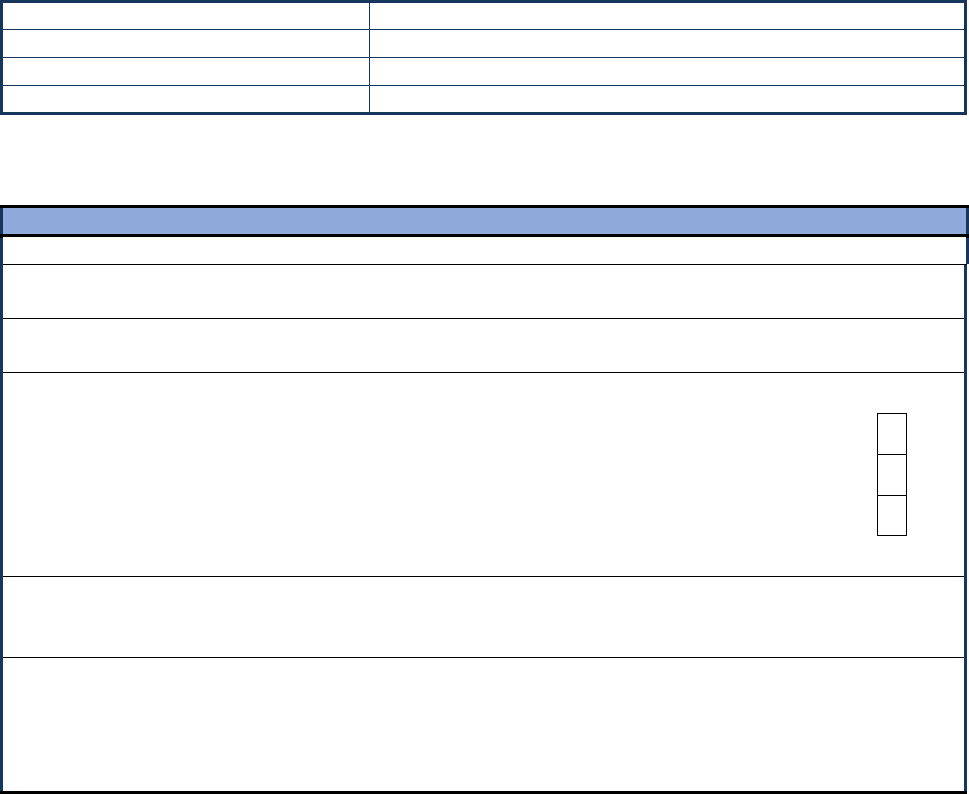
Policy Management Framework Version 1.1 Page | 20
Appendix 4 Equality Impact Assessment Form
Equality Impact Assessment (EIA) is a systematic and evidence-based process which
verifies that the University’s policies and practices are non-discriminatory, and are fair and
inclusive in meeting the legitimate needs of the diverse groups that make up the SETU
community. The key purpose of the Form and Guidelines are to help identify any Equality,
Diversity and Inclusion (EDI) impact (positive or negative) associated with new or updated
policies, along with any potential discrimination or gaps in policy development. It helps to
ensure that SETU Policies are non-discriminatory and uphold the university’s public sector
equality duty.
This form should be completed, in conjunction with the EIA Guidelines (available from the
EDI Office), and submitted along with the proposed policy for approval to Governing Body
as part of new policy development or major review of existing policy. The EDI office is
available for support and to consult with on the possible EDI impacts of a propose policy
and the operation of this form, and it is advisable to consult with the office prior to any
proposed policy going to consultation.
Equality impacts should continue to be considered throughout the policy drafting process
and the final Equality Impact Assessment Form should be submitted with the final policy
for approval by Governing Body.
Policy and Procedure Title
Effective Date
Version
Policy Owner
Part 1
EIA Date:
Membership of Policy Development Group:
Scope of Policy:
Policy Development Phase:
• Proposed new policy
• Undertaking a review of an existing policy
• Other (please state):
Please identify any opportunity to promote Equality, Diversity and Inclusion in the
University or any potential adverse impact that the development of this policy could have,
on any of the equality grounds identified below.
Opportunity to promote or embed EDI in the University through the Policy………….
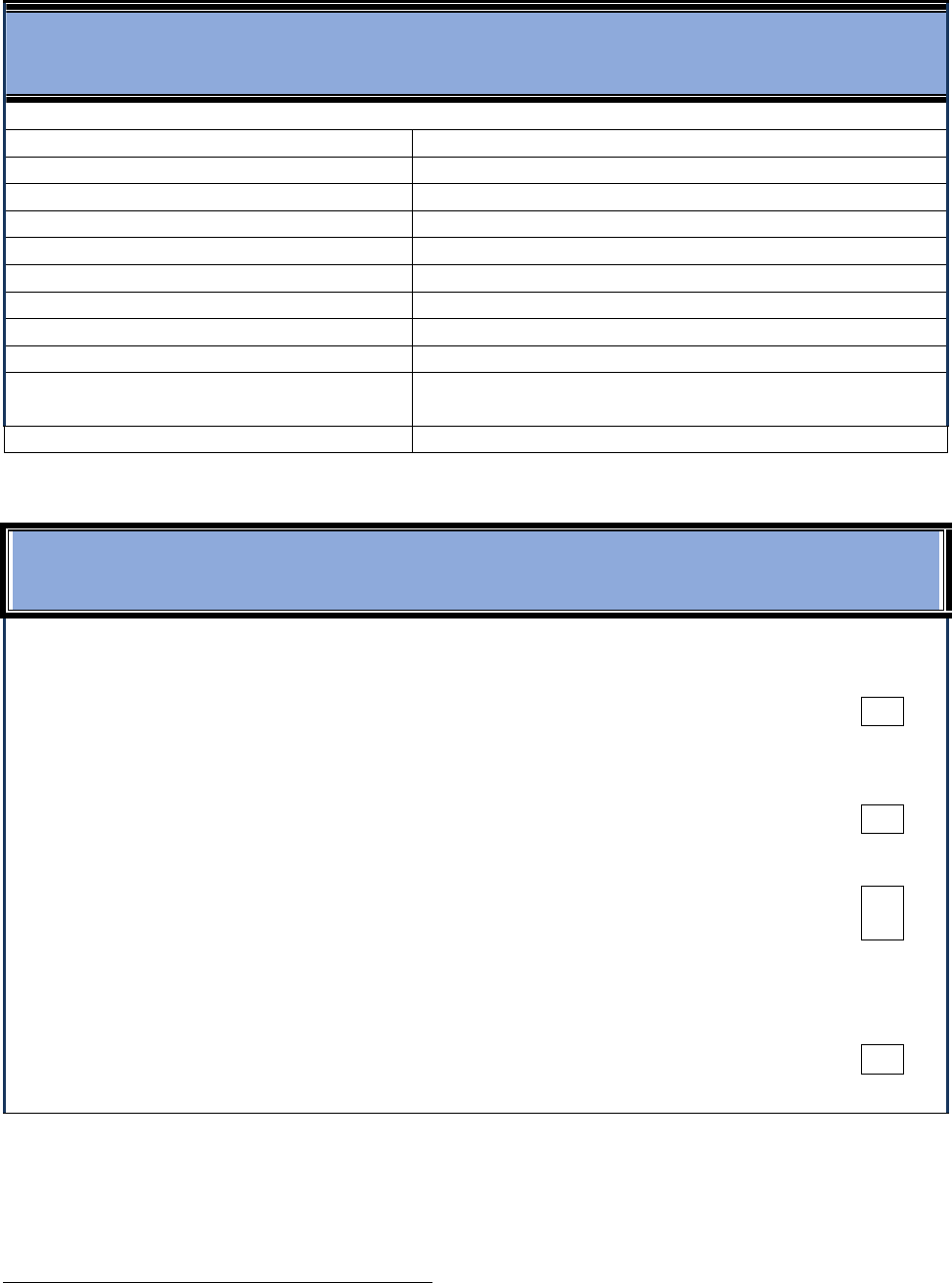
Policy Management Framework Version 1.1 Page | 21
Part 2
Please consider whether the review has identified that the policy could have an impact
across any of the following equality grounds.
Equality Ground
Identified Potential Impact (if any)
Race
Disability
Gender (including gender identity)
Age
Sexual Orientation
Religion
Civil Status
Family Status
Membership of the Travelling
Community
Socio-economic Status
Part 3
Select one of the four outcomes below to indicate how the development/review of the
policy will be progressed and state the rationale for the decision.
Outcome 1:
No change required – the assessment is that the policy is/will be
robust and/or
promotes Equality, Diversity and Inclusion in the University.
Outcome 2:
Adjust the policy – this involves taking steps to address any adverse
impacts
before the policy has been developed.
Outline these steps:
Outcome 3:
Continue the policy while mitigating against any potential adverse
impacts.
Outline how these adverse impacts can be mitigated against:
Outcome 4:
Stop the policy or practice, as there are adverse effects which
cannot be
prevented or mitigated against.
The form should be signed by the Policy Owner and submitted along with the Policy for
approval/review:
Policy Owner
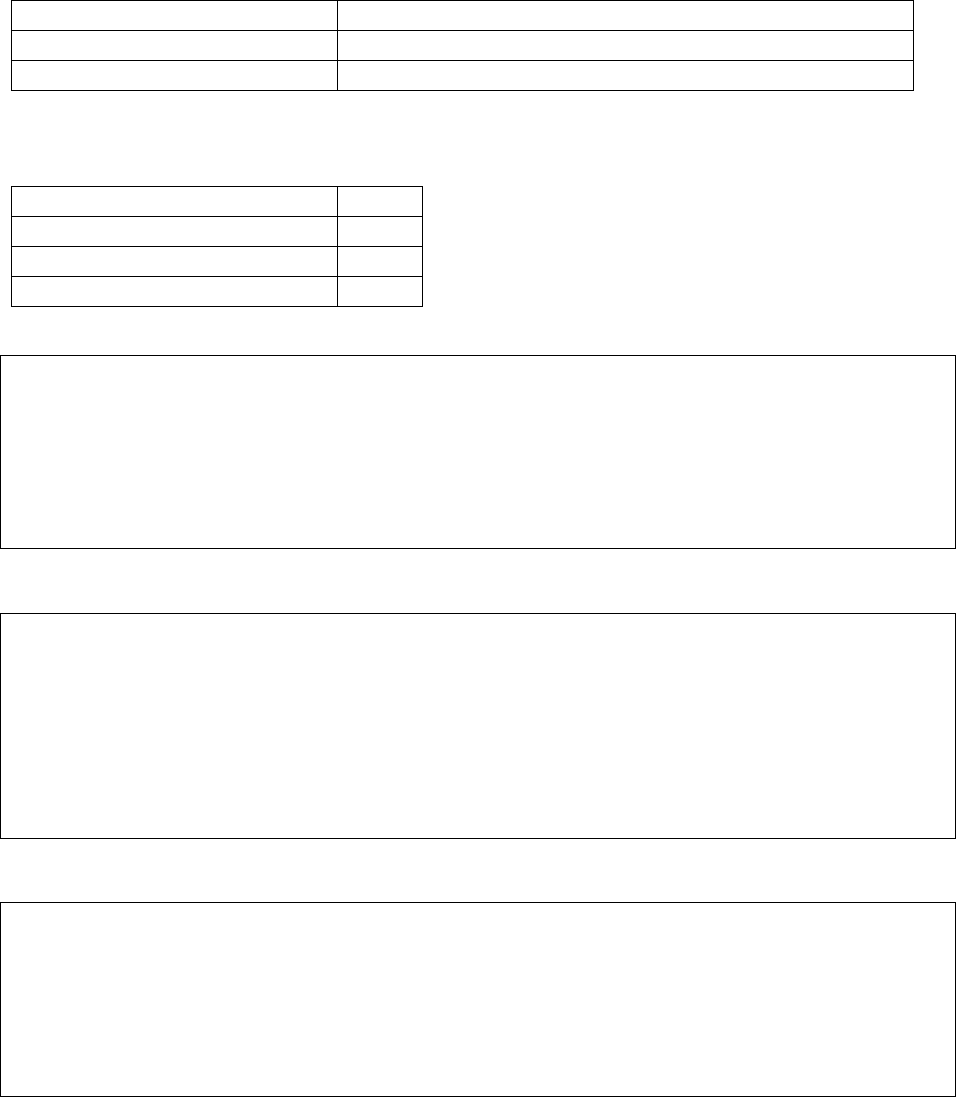
Policy Management Framework Version 1.1 Page | 22
Appendix 5 Policy Review Record Sheet
The Policy Review Record Sheet is intended to provide guidance for the review of
a policy. If the revised policy needs to go forward for committee approval, the
record sheet may be appended to the revised policy for information purposes.
Policy Review record sheet
Current Policy Title
Policy Owner
Date of first approval
Tick one:
Comprehensive Review
Major Policy Change
Minor Policy Change
No Change
Has this policy been reviewed or amended since it was first approved? If yes,
please detail when it was last reviewed or amended, what triggered the review or
amendment, and what changes were made.
Is a change or amendment to the policy being proposed now? If yes, please
outline what amendment is being proposed and why (e.g. external or internal
triggering events such as a change in legislation, new regulations, addressing a
new risk, issues identified with existing policy, etc.)
Are there other existing policies that overlap or are closely related to this policy?
Are there any existing policies which are referenced in this policy or on which this
policy is dependant? If yes, which indicate below which ones.
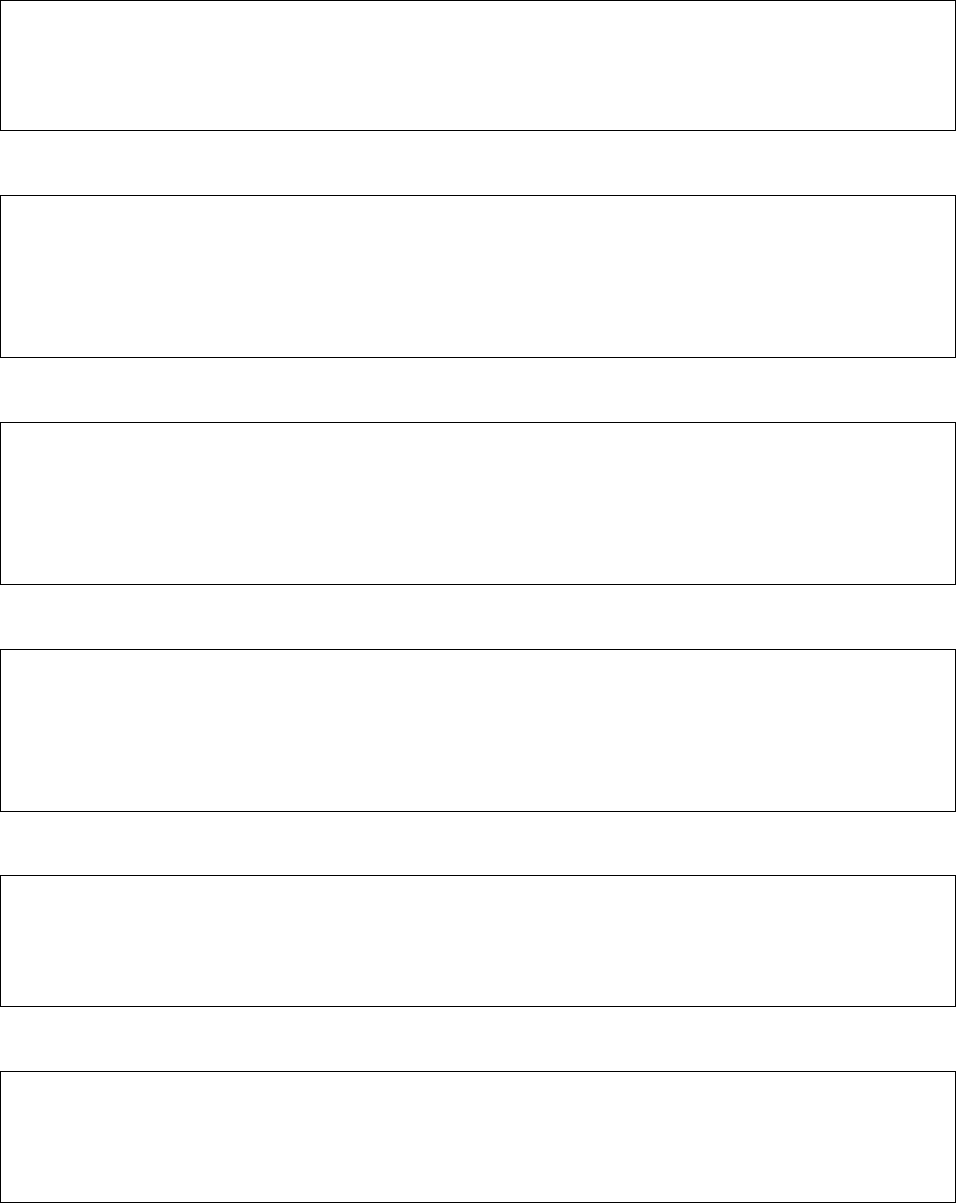
Policy Management Framework Version 1.1 Page | 23
Are changes to these policies also required? If so, please summarise these below.
What consultation took place as part of the review of this policy? Please list the
groups or individuals.
Outline the impact of the revised policy, if known, on internal and external
stakeholders.
Outline how the revised policy will be communicated to internal and external
stakeholders.
Outline how the impact of the revised policy will be monitored.
Outline how compliance with the revised policy will be monitored.
Policy Management Framework Version 1.1 Page | 24
Appendix 6 Version Control
Version control is a method of managing multiple variations of the same
document, particularly when it is important to keep a clear record of how the
document was created, developed and changed over time. Each time the
document is revised a unique identifier is applied, which enables the reader to
identify the latest version of the document and differentiate between drafts and
final approved versions of the document.
Version control, as outlined below, is to be applied to the development of key
University documents, such as policies, procedures and strategic plans, as these
documents are reviewed and updated on a regular basis and it is essential to
know which version is currently in force, or which version was in force, at a point
in time.
Benefits of Version Control
The benefits of using version control include;
❖ Provides a systematic and consistent approach, which is universally
understood and applied.
❖ Creates authentic, complete and reliable records, making a clear separation
between drafts and final versions.
❖ Provides a clear audit trail of how the document has been created, changed
and developed over time.
❖ Enables the latest final version of a document to be found quickly and
easily or trace which version was “in force” at any one time.
❖ Allows the deletion of drafts or redundant versions with confidence,
reducing duplication, errors, confusion or misunderstanding.
Methodology for Tracking Version Numbers
Where it is important to identify and track minor or major revisions to the
document, as is the case for SETU policies, before a final version is agreed, then
the formal numbering system outlined below is to be used. The system
differentiates between minor and major revisions.
Minor revisions are amendments to correct or update a title, name, numbering,
web link or a reference to law, another policy document, a delegation or other
relevant document; or otherwise modify it in a way that does not significantly
change the intent or content of the existing version of the policy document. This
includes editorial amendments to correct document formatting, spelling, grammar,
or clarity of language, which does not otherwise affect the document intent or
content.
Major revisions are amendments that substantially alter the intent or content of
the policy. Major revisions would be where the document has had significant
changes or review and requires re-approval.

Policy Management Framework Version 1.1 Page | 25
Minor revisions are indicated by making increments to the decimal place e.g. V
1.2; V 1.3; V1.4
Major revisions are indicated by making increments to the whole number e.g. V
1.0; V 2.0; V 3.0
An example of how this may look in practice is seen below;
Draft V 0.1
This is the first version of the draft
Draft V 0.2
This is the second version of the draft which reflects minor
changes and additions
Final V 0.3
This is the final draft version of the document
Version 1.0
This is the first approved version of the document
Version 1.1
This version reflects minor changes to the first approved
version, version 1.2; version 1.3 etc can be used to record
further minor changes and/or subsequent approval by
Governing Body where there were no changes.
Version 2.0
Version 2.0 indicates the second major approved version of
the document.
Version 2.1
This version reflects further minor changes to the second
approved version of the document, version 2.2; version 2.3
etc record further minor changes
Version 3.0
Version 3.0 indicates the third major approved version of
the document
The SETU policy template includes a Version Control Table, which provides useful
contextual information about each change, the author, date and status of the
document. A Version Control Table should be inserted on the front page of the
document.
An example of a Version Control/Review Table is seen below;
Version
Author
Date
Changes
V 0.1
HR Manager
1.1.2022
First draft
V 0.2
VP CAF
1.2.2022
Comments added
V 0.3
HR Manager
1.3.2022
Executive management team
comments added Final draft
approved by EMT
V 1.0
VP CAF
1.4.2022
Version 1.0 Approved by Governing
Body
Include any useful information which brings added value to the understanding and
context of the history to the document.
Although documents are superseded by a later final version, remember it may
also be important for the University to retain older versions of a document, for
instance to demonstrate what policy, regulation or condition of grant were “in
force” at a particular time.
Policy Management Framework Version 1.1 Page | 26
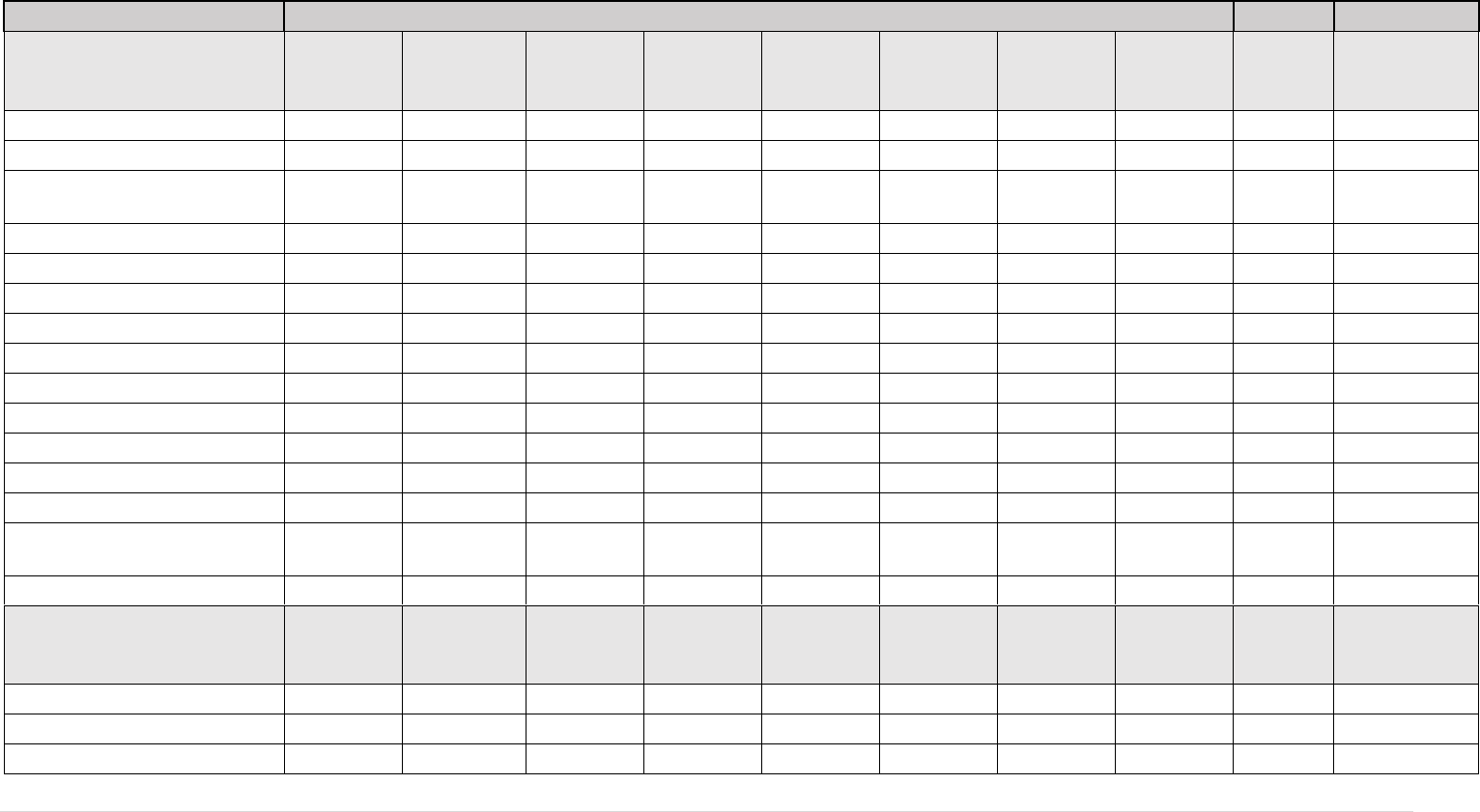
Policy Management Framework Version 1.0 | P a g e 27
Appendix 7 Communications Checklist
The Communications Checklist is intended to provide an outline plan for communicating a new or revised policy. The list of
stakeholders and the communication channels should be customised for the policy in question.
Stakeholder
Communication Channel
Date
Responsibility
Internal
Briefing
Note
Information
Session
Workshop
Meeting
Newsletter
Website
All
Employees
email
Other
Student Body
All Employees
All Academic Employees &
Researchers
All PMSS Employees
Governing Body
Executive Management Team
Academic Council
Heads of School
Heads of Department
Heads of Function
Students Union
Student representatives
Student Services
Research Institutes & Centres
& Group
Subsidiaries
External
Briefing
Note
Information
Session
Workshop
Meeting
Newsletter
Website
All
Employees
email
Other
HEA
THEA
Other
